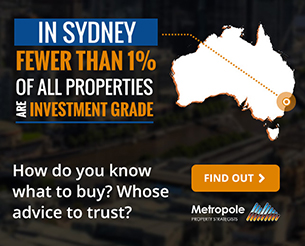In previous instances when value growth has slowed or started to fall in Sydney and Melbourne the experience has often been that value growth has ramped-up in other capital cities.
This makes sense given that as affordability deteriorates in certain areas of the country people start to turn their attention elsewhere.
This week’s blog takes a look at the comparative value of housing in other capital cities and nearby markets relative to in Sydney and Melbourne.

Sydney is the nation’s most expensive capital city housing market currently with the median dwelling value in June 2018 recorded at $870,554.
 The premium for the median dwelling value in Sydney relative to the other national capital cities is: 21% for Melbourne, 76% for Brisbane, 98% for Adelaide, 89% for Perth, 99% for Hobart, 101% for Darwin and 48% for Canberra.
The premium for the median dwelling value in Sydney relative to the other national capital cities is: 21% for Melbourne, 76% for Brisbane, 98% for Adelaide, 89% for Perth, 99% for Hobart, 101% for Darwin and 48% for Canberra.
With dwelling values in Sydney now falling, the premium is reducing however, the cost of housing in Sydney relative to other capital cities is generally significantly higher than the long-term averages.
In fact only Melbourne (42%) and Hobart (103%) have a current differential which is lower than the long-term average.

Of course, people that potentially migrate out of Sydney don’t necessarily only choose to go interstate, they may also migrate intrastate.
The premium for Sydney dwellings compared to those in the other regions highlighted is currently: 105% for Capital Region, 176% for Central West, 113% for Hunter Valley exc Newcastle, 29% for Illawarra, 52% for Newcastle and Lake Macquarie, 64% for Richmond-Tweed and 47% for Shoalhaven.
Although values have increased in regional NSW over the past year, the rate of growth has slowed substantially, particularly within Illawarra, Newcastle and Lake Macquarie and Southern Highlands and Shoalhaven.
These three regions have been seeing strong value growth over the past five years and they are also the only three regions in which the value differential is lower (substantially so) than the long-term average.

Looking at the value differential between Melbourne and other capital cities, except Sydney, Melbourne’s median dwelling value of $716,774 is higher than all other capital cities.
The premium for Melbourne is currently recorded at: 45% for Brisbane, 63% for Adelaide, 55% for Perth, 64% for Hobart, 65% for Darwin and 22% for Canberra.
The value differential for Melbourne to all these capital cities is greater than the long-term average.
In fact, notwithstanding the recent slight reductions due to Melbourne value falls, the value gap between Melbourne and Brisbane, Melbourne and Adelaide and Melbourne and Darwin is the largest it has ever been.

The above chart looks at the dwelling value premium for Melbourne relative to the major regional areas adjoining the capital city.
Melbourne retains a significant premium in terms of housing costs relative to these areas.
What is very different to what was shown in the chart for Sydney and Regional NSW areas is that outside of Geelong, the housing cost premium in Melbourne remains well above the long-term average.
 This suggests that while value growth has been rippling out of Melbourne to Geelong for some time, it has only just started to spill-out into the other three regions recently.
This suggests that while value growth has been rippling out of Melbourne to Geelong for some time, it has only just started to spill-out into the other three regions recently.
The current premium for Melbourne dwellings relative to the other regions is: 99% for Ballarat (80% long-term average), 100% for Bendigo (74% long-term average), 29% for Geelong (40% long-term average), 123% for Latrobe-Gippsland (89% long-term average).
There are some explainable reasons why dwelling values in Sydney and Melbourne have risen so substantially over recent years.
These include but are not limited to: strong rates of migration to the cities, dramatically increased foreign investors, low mortgage rates, increased demand from investors and much stronger economic conditions than elsewhere in the country.
The latest data shows a pull-back in net overseas migration, slowing interstate migration to NSW and Vic, foreign investment has reduced, fewer local investors and reduced availability of credit for housing despite still low mortgage rates.
 Sydney and Melbourne still have comparatively strong economies but we have started to see the economic performance elsewhere improve.
Sydney and Melbourne still have comparatively strong economies but we have started to see the economic performance elsewhere improve.
Sydney and Melbourne have also seen a dramatic reduction in housing affordability over recent years as dwelling values have increased much faster than household incomes.
The value gap between Sydney and Melbourne and other regions doesn’t necessarily mean that value growth will pick-up elsewhere where dwelling values are much lower.
However, if other areas of the country can improve their economic performance, the lure of much more affordable housing may be enough of a lure to see an increasing number of Sydneysiders and Melbournians to migrate away from these two cities to other areas of the country.

No comments:
Post a Comment